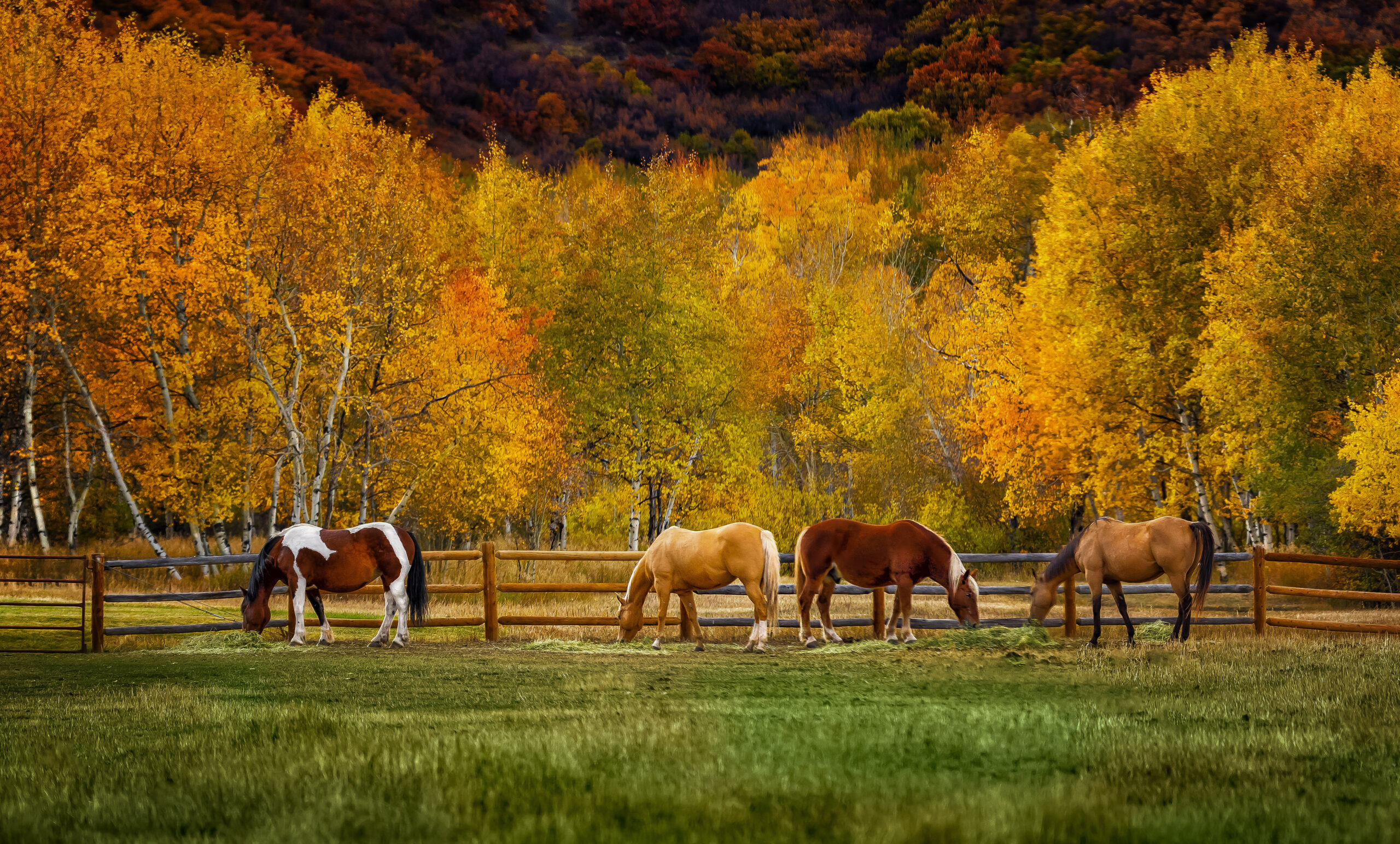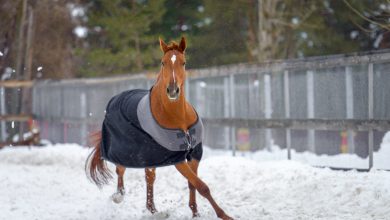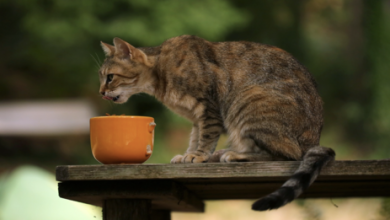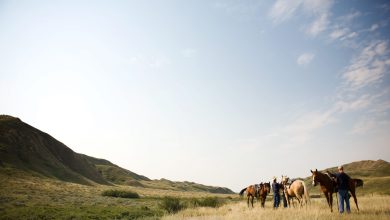Learn How Laminitis Changes With the Seasons

This article was originally published October 4th, 2013, and was updated on October 31st, 2024.
The sky is so blue! The air is so crisp! The woods are ablaze with color, and the bugs are finally gone! But when you bring in your horse from the pasture, he balks on the lead line and shuffles his feet. He seems to say “ouch!” with each tentative step.


Laminitis in Fall?
The last time your horse’s feet were sore was in April a few years ago, when he ate too much spring grass. But this can’t be laminitis again. It’s October. Laminitis is a springtime disease. Or is it?
Between 2 and 7 percent of all horses in this country have experienced laminitis in some form, researchers say; USDA statistics show that laminitis was reported on 13 percent of horse properties. Of that group, about 5 percent didn’t survive.
Here, you’ll find insight into how equine laminitis seems to change with the seasons, and why it’s especially important to understand the risks that come in the fall.
Then you’ll learn how to reduce your horse’s risk, and what to do if he starts showing signs of laminitis any time of the year.
Using this information, you’ll be able to understand more about your horse’s hormone levels, then schedule blood tests, adjust feed, and evaluate grazing accordingly.
Your reward will be a healthy and happy horse whose feet won’t let him down.
What is Laminitis?
Laminitis is the most serious disease of the equine foot and causes pathological changes in anatomy that lead to long-lasting, crippling changes in function (termed chronic laminitis or founder). It’s the second-biggest killer of horses after colic.
A horse has laminitis when the foot’s lamina, the connecting fibers between hoof wall and bone, suddenly fail. Without the bone properly attached to the inside of the hoof, the horse’s weight and the forces of locomotion drive the bone down into the hoof capsule. Arteries and veins are sheared and crushed, and the blood-delivery system to the coronet and sole is damaged. This results in unrelenting foot pain and lameness.
Laminitis’ clinical signs, the extent and severity of the condition and the response to therapy vary, making treatment and accurate prognosis difficult, notes Chris Pollitt, PhD, MRCVS, of the Australian Equine Laminitis Research Unit.
Severe damage to the hoof can occur within a few hours. The severity and extent of this initial damage is the single most important factor influencing the final outcome.
[READ: 5 Articles to Understand Hoof Health]
Risk Factors
Laminitis may strike at anytime and for many reasons. What we’ve always called “grass laminitis” is the most common form of the condition and often recurs.
It strikes most often in spring and fall, but often coincides with the end of long periods of drought or extreme weather that affect the grass’ lifecycle, regardless of what it says on the calendar.
More factors than just grass increase the risk. Here’s a rundown.
Hormonal problems
Disruption of a horse’s ability to produce or regulate specific hormones can lead to laminitis. An estimated 90 percent of laminitis cases can be traced to hormonal problems in horses; “grass laminitis” occurs in horses with imbalanced hormones.
Luckily, veterinary tests can measure your horse’s hormone levels for evidence of Equine Metabolic Syndrome, a disorder of the hormone insulin (“insulin resistance”), or Pituitary Pars Intermedia Dysfunction, formerly called Equine Cushing’s Disease.
PPID tests measure adrenocorticotrophic hormone (known as ACTH) from the pituitary gland. Some PPID horses may also have insulin level problems; your horse should have both tests.
Obesity
Seasonal laminitis is especially problematic for horses we call easy keepers. They tend to keep on weight regardless of how little grain they’re fed. However, not all easy keepers or obese horses have EMS, and not all horses with EMS are obese. Some may not look fat at first glance; many have pads of fat only on their shoulders and at the base of their tails, and their necks have overdeveloped crests.
“Obesity is the single greatest predisposing cause of laminitis in pleasure horses,” says Donald Walsh, DVM, of Homestead Animal Hospital in Villa Ridge, Missouri, a pioneer of laminitis prevention through the laminitis research organization Animal Health Foundation (www.ahf-laminitis.org).
“Other risk factors take on a greater importance when they show up in a horse that’s obese, as well. Based on my experience observing laminitic horses over the past 46 years in veterinary practice, I believe that obesity leads to the development of weakened laminae, and changes in the growth pattern of the feet.”
Abnormal hoof wall
A ridged hoof wall, marked with raised “fever rings” or changes in hoof-growth pattern, is a distinct warning sign. Small dots of dark blood or bands of redness seen in the white line during trimming are also signs that some laminitis-related damage occurred in the past.
Springtime bouts
Most horses that suffer from seasonal laminitis seem to have bouts of it in the springtime when the pastures come back to life after a winter of dormancy.
Veterinarians, such as Dr. Walsh, think that without a hormonal problem, lush grass isn’t a health risk in itself. But once a horse has had laminitis, the disease often strikes again if he isn’t carefully managed.
This recurrence happens because such a horse is
genetically prone to develop insulin resistance, especially if he’s overweight; and the previous laminitis left his feet damaged, weak, and prone to new bouts of the disease.
Classic factors
The classic non-hormonal causes of laminitis still exist. These include grain overload, retained placenta in mares, drug reactions, high fevers, and high stress. Support-limb laminitis is a problem in horses with leg injuries. So, keep in mind that horses have laminitis for a reason other than “grass” in spring and fall.
Laminitis Causes
Rich grass doesn’t directly cause laminitis, but it can be a contributing factor.
“I now wonder if grass contains something that may incite the inflammatory pathway,” Dr. Walsh says. “Because horses’ feet are so abnormal from chronic high levels of insulin stretching the laminae, a mild insult and activation of this pathway push them over the edge, and acute laminitis develops.
“Normal metabolic horses can endure this and no laminitis develops,” Dr. Walsh continues. “Whatever this is, it must occur for only a short time as most of the cases of so-called grass laminitis is seen during a short time in the early spring here in Missouri.”
Some horses are sensitive either to weight gain from grass or to something in the grass itself. Most grass pastures dry up or become dormant in the winter months in temperate climates.
Spring grass produces large amounts of sugary substances to give the pasture energy to grow and blossom, and the pasture hums with activity until the hot sun slows things down into midsummer dormancy.
Fall Laminitis
When fall comes, pastures are refreshed by warm days and cool nights, as well as more rain than in summer.
“The bacterial composition in the soil which came to life in the spring is now becoming dormant from the cold nights and perhaps similar conditions to spring are again present to affect the grass,” Dr. Walsh proposes.
He stresses that research hasn’t determined exactly how lush grass triggers laminitis in horses with such hormonal problems as insulin resistance, but the link between insulin resistance and laminitis is well-documented. A large dose of insulin alone caused laminitis in test horses in Australia.
Horses may have been ridden often during the summer, but as activities slack off in the fall, they gain weight as they graze.
Or, cooler autumn weather means that horses are ridden more, so owners feed them more. As autumn gets colder and darker, horses are fed more hay, some of which may be as rich as lush grass.
Mares and stallions may experience reproductive hormone surges.
As flies die off and the weather cools, horses seem to have more energy and a brighter attitude. Owners may equate more activity in the pasture and thickening coats with a need for more food.
“The horse is prepared to use his fat stores in the winter for his energy needs, but humans have intervened by feeding all winter and not allowing this to happen,” Dr. Walsh laments. “I believe ‘easy keepers’ should be fed far less in the winter to allow this natural cycle to happen.”
Prevention Tips
1. Track your horse’s condition. Know your horse’s normal Henneke body-condition score. Photograph your horse several times a year. If you have access to a horse scale, record your horse’s weight, and keep it for reference.
2. Work your horse. Keep your horse active. Ride, drive or pony him regularly, all year long.
3. Watch the grain. Don’t increase your horse’s grain ration just because the air is crisp. Record how much grain you feed him from season to season. Measure grain with a marked scoop.
4. Analyze hay. The best hay has less than 10 percent nonstructural carbohydrate (NSC). Soak hay for half an hour before feeding to reduce the sugar content.
5. Note the weather. Cool nights and warm sunny days usually create the most lush pasture grass. When brown summer grass starts turning green, move at-risk horses off pasture.
6. Use a grazing muzzle. Use a slow-grazing muzzle on at-risk horses, even for short turnout times.
7. Use a dry lot. Turn a fenced-off area into a dry lot for an at-risk horse. Prevent grass growth with layers of sand, stone dust or wood chips. Even sparse grass and weeds can be dangerous to an at-risk horse.
8. Know your horse’s foot condition. Ask your farrier how the white line looks and if he has bruises or founder rings on his feet.
9. Keep a horse-health diary. Has your horse ever had mild lameness in the spring or fall? Do you see a pattern of seasonal lameness? Does the lameness correspond to changes in paddocks, or a new load of hay? Does your horse resist changing leads or prefer just one gait?
10. Be prepared. If your horse has had laminitis in the past, discuss it with your veterinarian and farrier. Plan what to do if your horse becomes lame. Boots with supportive pads are a good investment if he does.
Signs of Laminitis
> Your horse may assume an unusual stance, with his front legs stretched out or he may shift his weight from one foot to the other.
> Your horse may walk gingerly, or rock back and forth in his stall.
> On the lead line, your horse may balk when asked to turn.
> Your horse may lie down more often than usual.
> You may notice changes in the growth of your horse’s feet. His heels may grow faster than the toes, and growth rings may look curved instead of symmetrical. The white line at the toe may be stretched.
> You may feel a strong pulse at the back of your horse’s pastern and/or an abnormally warm hoof wall; these are danger signs.
Emergency Steps
If you believe that your horse is suffering from laminitis, don’t panic. Slowly and carefully move him to a stall. Feed hay, but not grain or sugar-rich carrots and apples. Call both your veterinarian and your farrier.
In older times, wise horsemen stood horses with laminitis in cold streams or the chilly ocean. Recent research proves that intensive ice soaking prevents laminitis in the early stages. Donald Walsh, DVM, recommends standing all four of your horse’s feet in deep ice water for the first 24 to 48 hours.
Don’t medicate your horse until he’s been seen by your veterinarian. Your vet needs to make an objective judgment about your horse’s level of pain and the severity of lameness.
Most veterinarians treat every horse as an individual. Your vet will likely draw up a diet and medication plan, test your horse’s hormone levels, and discuss a shoeing or trimming plan with your farrier.
Tell your vet about other medications your horse may be taking, as well as any oral supplements.
Frank Puckett, Jr. is editor and publisher of the Gloucester, Massachusetts-based Hoofcare & Lameness: The Journal of Equine Foot Science.



